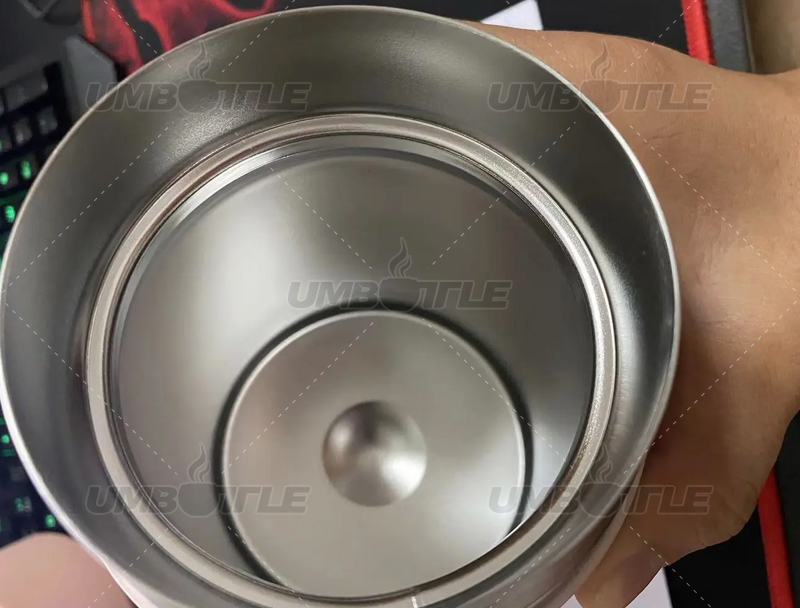How to stay away from the “poisonous water cup”?
In the previous article, the editor explained in detail what kind of water cup is a "poisonous water cup". http://www.umbottle.com/ProductsDetail-VB-10012.htmlToday, the editor will continue to share with you on the topic of "poisonous water cups" how to stay away from "poisonous water cups" and buy healthy water cups.
How to identify a “poisonous water cup”?
I won’t go into much detail about professional identification. Instead, I will tell you how to identify a “poisonous water cup” through observation, contact, and smell.
First of all, observation.
"Toxic water cups" are usually made with relatively rough workmanship, poor details, and obvious defects in the material. For example: Check whether there is residual paint on the mouth of a stainless steel water cup, whether the inner liner is black, and especially whether there are obvious signs of rust on the welding of the stainless steel metal joints. Plastic water cups should be transparent to see if there are obvious impurities. http://www.umbottle.com/ProductsDetail-VB-10012.htmlHere, the editor will talk about glass water cups and ceramic water cups in particular. Both types of water cups require high-temperature baking. Under long-term high-temperature environments, harmful substances will be removed and evaporated, especially glass water cups, even if there are rumors in the market that some glass water cups are made of recycled materials, which are unhealthy and unsafe to use.
Glass itself is a recyclable and reusable material. In a high-temperature production environment, there is almost no difference between recycled materials and new materials. Even glass "toxic water cups" are pollution caused by storage and transportation after production, which has nothing to do with the material itself. http://www.umbottle.com/ProductsDetail-VB-10012.htmlThe situation of ceramic water cups is similar, but unlike glass water cups, many ceramic water cups need to be glazed, with both underglaze and overglaze colors, which requires special attention, especially for overglaze colors. Some colored painting paints contain heavy metals, and the overglaze baking temperature is much lower than the production temperature of ceramic water cups.
When using high-temperature water to make tea, heavy metals and other harmful substances will be released. The editor has previously explained in detail how to judge whether plastic materials are impurities, so I will not repeat it today.
Secondly, is there a safety certification?
When we buy a water cup, we can use whether this water cup has a safety certification as a health and safety standard. The more certifications the water cup has, the more assured you can be when buying it, but everyone should know that any certification requires costs. http://www.umbottle.com/ProductsDetail-VB-10012.htmlThe more certifications passed, the higher the cost of producing this water cup, so usually the price of such water cups will not be very low. Friends, don’t think that it is not worth it just because the price of water cups with more certifications is higher, and buy cheaper water cups instead. The editor does not rule out that all cheap water cups are "toxic water cups", but the possibility that water cups with more certifications are "toxic water cups" is almost zero. These certifications are usually national 3C certification, EU CE mark, US FDA certification, etc. Please remember what the editor said that products with certification marks are usually more reliable.
Next is coating inspection. I will just skip this point here because it is difficult to judge with our eyes. At most, we can check whether the coating is uneven or whether there is any residue on the cup mouth. http://www.umbottle.com/ProductsDetail-VB-10012.htmlFor a detailed introduction to the coating knowledge, I have a previous article specifically explaining it.
Is it easy to clean?
Does the newly bought water cup change color? Although these are indeed some of the factors to determine whether it is a "toxic water cup", it is difficult to judge without some professional knowledge. The editor focuses on the taste. Whether it is a stainless steel water cup or a plastic water cup or a water cup made of other materials, the standard water cup should be odorless when it leaves the factory. Water cups with heavy odor or pungent odor are unqualified. http://www.umbottle.com/ProductsDetail-VB-10012.htmlThe generation of odor is usually a problem of materials, and there are also problems of improper storage management. But no matter which problem it is, if the odor is very heavy or even pungent, then this water cup should not be used no matter how big the brand is, how beautiful it is, or how cheap it is. Finally, the editor wants to emphasize that, yes, no matter what material the water cup is made of, it should be odorless when it leaves the factory and reaches the hands of consumers. The editor does not accept rebuttal on this point.

Dongguan Zhanyi Commodity Technology Co., Ltd. specializes in the production of metal cups, plastic cups, coffee cups, suction mug, lunch boxes, food jar, travel mugs, portable water bottles, sports bottles, home life desktop trash cans, thermos bottles, etc.These products are all our annual exports, and are recognized and loved by the US, Europe, Australia, Japan, South Korea, Taiwan, Hong Kong and other consumers. Support for small quantity order, fast customization.